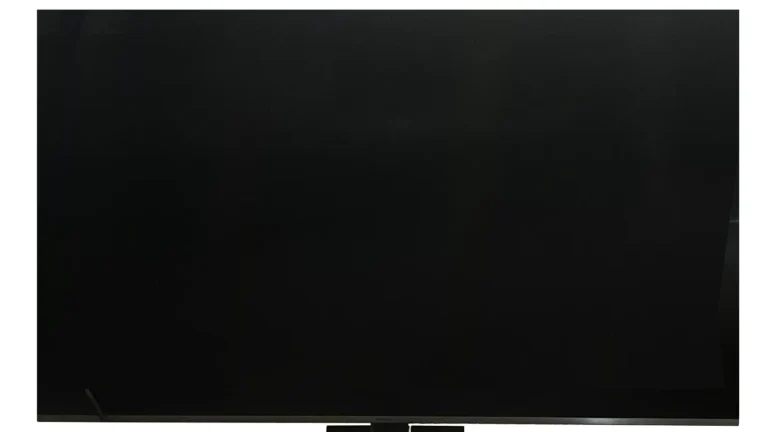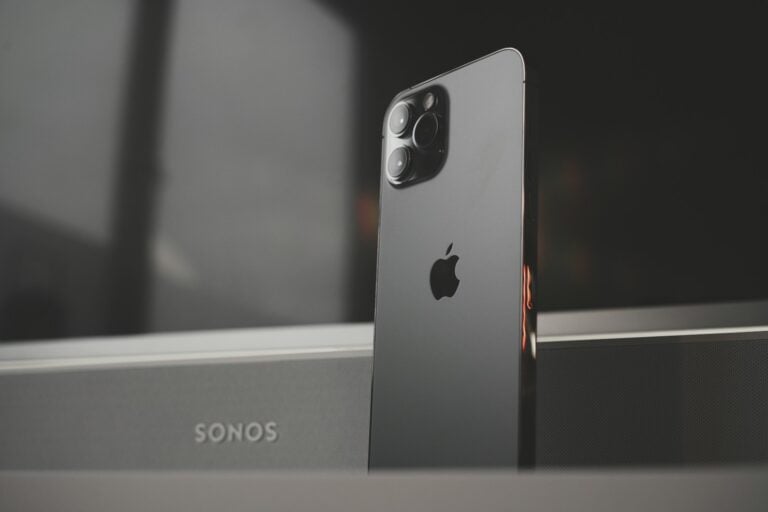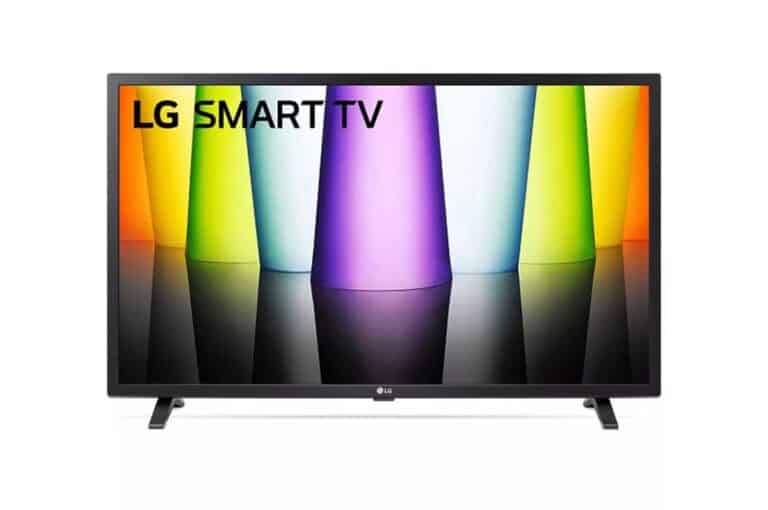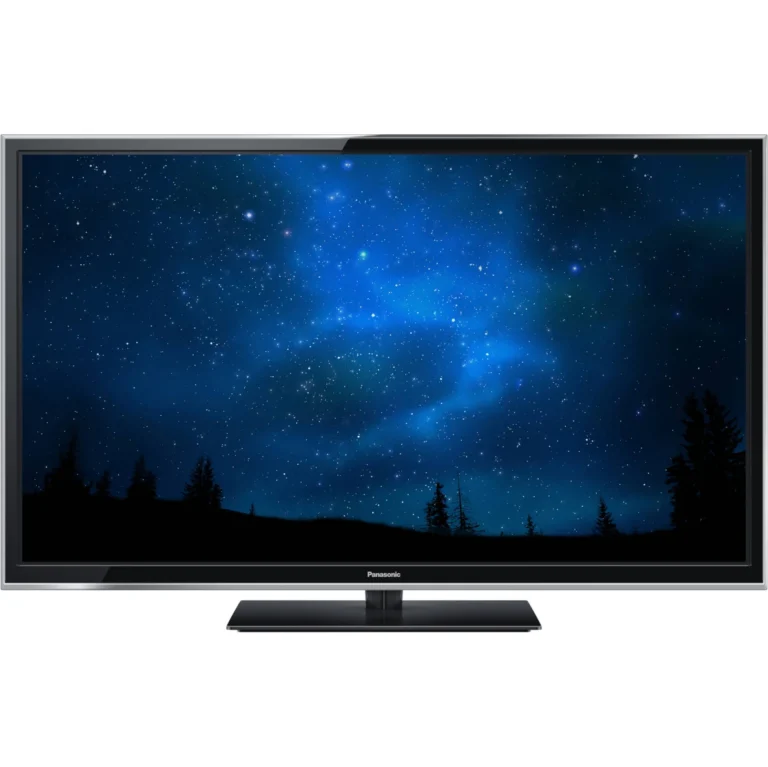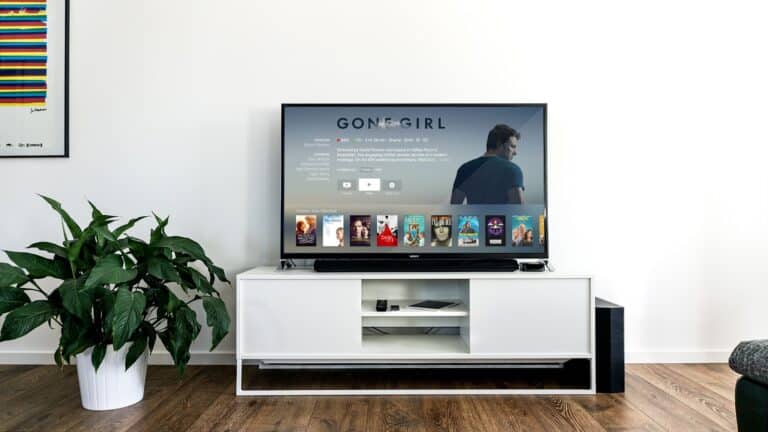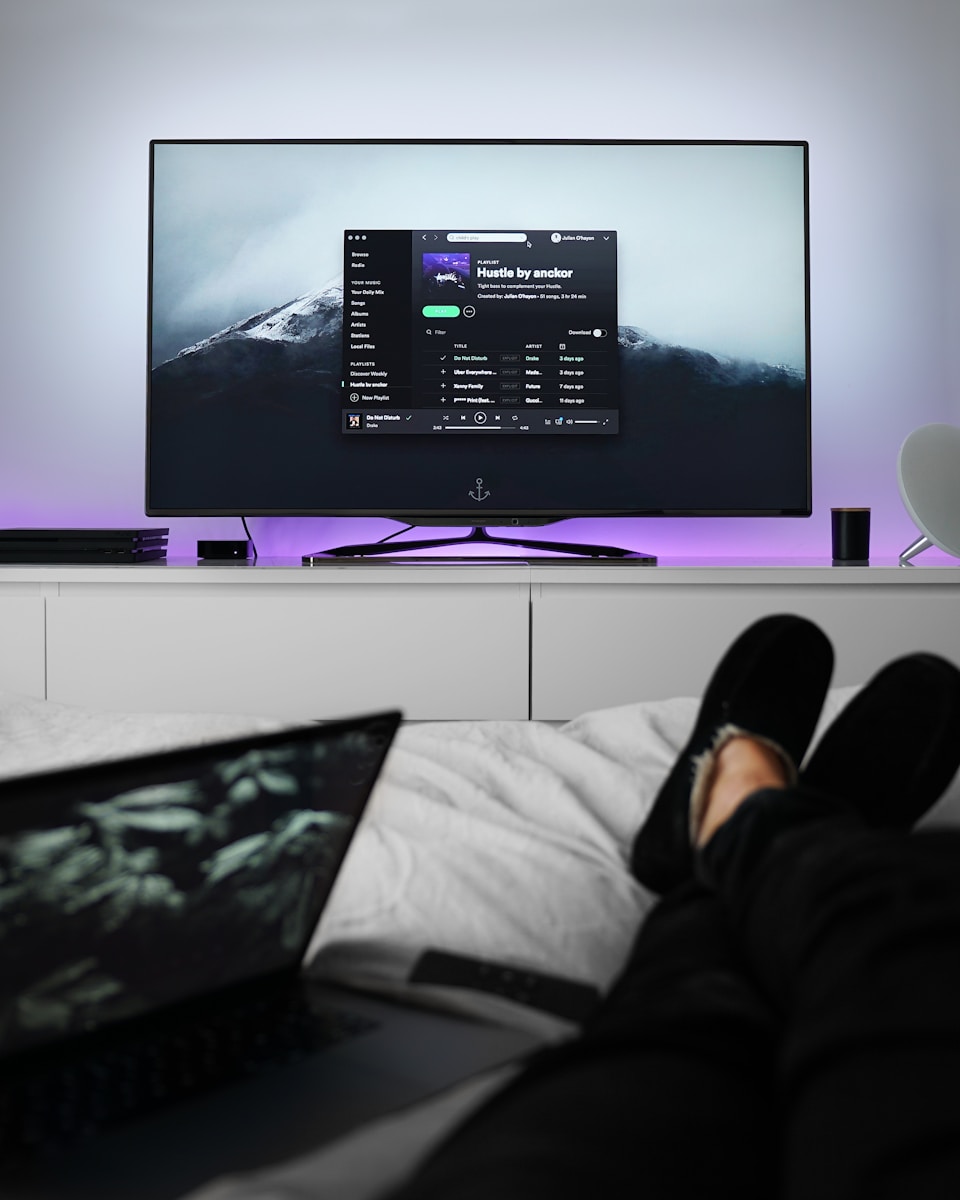
Keeping your TV screen clean not only improves your viewing experience but also extends the life of your display. Those fingerprints, dust, and smudges can be distracting when you’re trying to enjoy your favorite shows or movies. For most modern TVs, the safest cleaning method is to gently wipe the screen with a soft, dry microfiber cloth, moving from top to bottom in a straight motion.
Many people make the mistake of using household cleaners on their TV screens, which can damage the delicate display technology. Modern LCD, LED, and OLED screens have special coatings that can be stripped away by harsh chemicals or even water-based solutions. For stubborn marks, you might need a slightly damp microfiber cloth, but never spray anything directly onto the screen.
Regular maintenance prevents buildup and makes cleaning easier over time. Remember to always turn off and unplug your TV before cleaning to both see smudges more clearly and ensure safety. Older tube TVs with glass screens are more forgiving, but most flat-screens require gentler treatment to avoid permanent damage.
✅ What You’ll Need
- Microfiber cloth (lint‑free, soft)
- Distilled water (tap water may leave streaks/mineral spots)
- Screen‑safe cleaner (optional, check your TV’s manual)
- Small spray bottle (if using water/cleaner)
🧼 Step‑by‑Step Cleaning Guide
1. Turn Off & Unplug the TV
- Always power down and unplug before cleaning.
- This prevents electrical damage and makes smudges easier to see.
2. Dust the Screen First
- Use a dry microfiber cloth.
- Gently wipe in straight lines (up‑down or side‑to‑side).
- Avoid pressing too hard—pressure can damage pixels.
3. Remove Smudges & Fingerprints
- Lightly dampen a microfiber cloth with distilled water or a screen‑safe solution.
- Never spray liquid directly on the screen—it can seep into the edges and cause damage.
- Wipe gently in straight strokes until clean.
4. Clean the Frame & Ports
- You can use a slightly damp cloth with mild dish soap for the TV’s frame (not the screen).
- Use a dry cloth or compressed air for ports and vents.
5. Dry & Inspect
- Use a dry microfiber cloth to gently buff away any streaks.
- Wait until the screen is fully dry before plugging the TV back in.
🚫 What NOT to Use
- Paper towels, tissues, or rough cloths → can scratch the screen.
- Glass cleaner, ammonia, or alcohol (unless your TV manual explicitly allows it) → can strip protective coatings.
- Strong pressure → can damage pixels or cause discoloration.
🧩 Extra Tips
- Clean your screen once every 1–2 weeks or as needed.
- Keep food, drinks, and aerosols away from your TV.
- Store a dedicated microfiber cloth near your entertainment center for quick dusting.
✅ In summary: Use a microfiber cloth, distilled water or screen‑safe cleaner, and a gentle touch. Avoid harsh chemicals and never spray liquid directly on the screen. Done right, your TV will stay spotless and safe for years.
Key Takeaways
- Use a dry microfiber cloth for regular cleaning and only dampen it slightly for stubborn marks, never applying liquid directly to the screen.
- Avoid window cleaners, household cleaners, and alcohol-based solutions as they can damage modern TV screens.
- Always power off and unplug your TV before cleaning and wipe gently in a top-to-bottom motion to prevent scratches.
Understanding Your TV Screen Type
Flat‑screen TVs (LED, OLED, QLED, LCD, or plasma) are delicate and can be scratched or damaged if cleaned the wrong way. Avoid harsh chemicals and follow these safe methods to keep your screen crystal clear.
Before cleaning your TV, it’s crucial to know what type of screen you have. Different screens require different cleaning approaches to avoid damage, and understanding anti-glare coatings can help protect your investment.
Identifying LED, LCD, and OLED Screen Types
Most modern TVs fall into three main categories: LED, LCD, and OLED. LCD screens (Liquid Crystal Display) use liquid crystals illuminated by a backlight. LED TVs are actually LCD TVs that use LED lights for backlighting instead of fluorescent lights.
OLED screens (Organic Light-Emitting Diode) are different – they don’t require backlighting because each pixel generates its own light. OLED TVs tend to be thinner and more expensive.
You can identify your TV type by:
- Checking your user manual
- Looking at the model information on the back of the TV
- Searching your TV model number online
Most modern flat screens have special coatings that can be easily damaged by harsh cleaning methods.
Risks of Incorrect Cleaning Methods
Using the wrong cleaning method can permanently damage your screen. Harsh chemicals like ammonia, alcohol, or acetone can strip away the protective anti-glare coating that many screens have.
Pressing too hard while cleaning can cause scratching or pixel damage, especially on OLED screens which are particularly delicate. Even paper towels can be abrasive enough to cause micro-scratches over time.
Spraying liquid directly onto the screen is another common mistake. Excess moisture can seep into the edges of the screen and cause electrical damage or short circuits.
Heat damage is also possible with some cleaning methods. Using hot water or steam can warp the screen’s internal components and affect display quality.
Always turn off your TV before cleaning to better see smudges and reduce the risk of electrical issues.
Preparing to Clean Your TV Screen
Proper preparation is essential for safely cleaning your TV screen without causing damage. Taking a few minutes to set up correctly will protect your investment and ensure the best results.
Turn Off and Unplug Your TV
Always start by turning off your TV and unplugging it from the wall outlet. This step is crucial for your safety and the protection of your electronics. A powered-down screen makes it easier to see smudges and dust. It also prevents electrical issues that could damage your TV or cause personal injury.
Wait for the screen to cool completely before cleaning. Modern TVs can generate heat during operation, and touching a warm screen might leave marks or cause cleaning solutions to evaporate too quickly.
Some TV manufacturers recommend waiting 15-30 minutes after powering down before cleaning to ensure the screen is completely cool and static-free.
Remove Dust Gently
Before applying any cleaning solution, you need to remove loose dust from the screen. Dust particles can scratch your screen if rubbed during the wet cleaning process.
Use a clean, dry microfiber cloth to gently wipe the screen in one direction. Avoid circular motions, which can create swirl marks. Never use paper towels, tissues, or regular household cloths as they can leave tiny scratches on delicate screens.
For hard-to-reach areas or vents, consider using:
- A clean, soft makeup brush
- A can of compressed air (hold it 6-8 inches away)
- A microfiber duster specifically designed for electronics
Be equally gentle when dusting the frame and stand of your TV to prevent dust from migrating to the clean screen.
Collect Appropriate Cleaning Supplies
Gathering the right supplies is critical for safe TV screen cleaning. You’ll need:
- 2-3 clean microfiber cloths (one for dusting, one for cleaning, one for drying)
- Distilled water or highly diluted mild dish soap solution for stubborn marks
Never use these harmful products on your screen:
- Alcohol-based cleaners
- Ammonia products (like Windex)
- Abrasive powders or cloths
- Aerosol sprays directly on the screen
For OLED, LED, LCD, or plasma TVs, avoid all chemical cleaners unless specifically approved by your TV manufacturer. Check your owner’s manual for any recommended products for your specific model.
Choosing the Right Cleaning Solution
Using the proper cleaning solution for your TV screen helps prevent damage while effectively removing dust, fingerprints, and smudges. The wrong products can strip coatings and permanently harm your display.
Non-Abrasive Options
Water is often the safest starting point for cleaning TV screens. Distilled water is the best choice as it contains no minerals that might leave residue on your screen.
For slightly more cleaning power, dampen your cloth with a 50/50 mix of distilled water and white vinegar. This gentle solution removes most smudges without risking damage to sensitive screen coatings.
Never use these harsh chemicals on modern screens:
- Ammonia (found in many window cleaners)
- Acetone
- Alcohol-heavy solutions
- Abrasive powders or creams
These substances can strip anti-reflective coatings and permanently damage your display. Even regular tap water can sometimes leave mineral deposits on screens.
Homemade Solutions
A highly diluted dish soap solution works well for stubborn spots. Mix a tiny drop of mild dish soap with distilled water. Consumer Reports recommends this approach for the most persistent stains.
Some TV owners swear by a 1:1 mixture of vinegar and water with a tiny drop of dish soap. This combination cuts through oils from fingerprints while remaining gentle on screens.
DIY Cleaning Solution Recipe:
- 1 cup distilled water
- 1 cup white vinegar
- ½ teaspoon mild dish soap
Mix in a spray bottle, but remember to always apply to your cloth first, never directly on the screen.
Commercial Cleaners
Many manufacturers sell specially formulated TV screen cleaners. These products balance cleaning power with screen safety and often come with appropriate microfiber cloths.
Be cautious of marketing claims and always check that a commercial cleaner specifies it’s safe for your type of screen. LCD, OLED, and plasma screens may have different cleaning requirements.
Don’t waste money on expensive cleaners when homemade solutions often work just as well. Former TV salespeople warn that some commercial cleaners contain hidden chemicals that might damage screens over time.
If you do purchase a commercial cleaner, look for one that explicitly states it contains no alcohol, ammonia, or abrasive ingredients. Check your TV’s manual first—some manufacturers recommend specific cleaning products.
Step-by-Step Cleaning Process
Proper technique is crucial for safely cleaning your TV screen without causing damage. The right tools and methods will remove dust, fingerprints, and smudges while protecting your screen’s delicate surface.
Wiping with a Dry Microfiber Cloth
Start by turning off your TV and unplugging it. This makes it easier to see dust and smudges, and it’s safer too.
Use only a clean, soft microfiber cloth designed for electronics or glasses. Regular cloths, paper towels, and tissues can scratch your screen because they contain tiny fibers.
Gently wipe the screen in a circular motion, working from the top to the bottom. Don’t press hard—let the cloth’s fabric do the work.
For stubborn fingerprints or smudges, use very light pressure. If dust keeps returning, you might need to address the static electricity on your screen with proper cleaning solutions.
Pay special attention to corners and edges where dust tends to collect. Hold the cloth differently to reach these areas without touching the screen with your fingers.
Applying Cleaning Solution
If dry wiping doesn’t remove all smudges, you’ll need a proper cleaning solution. Never spray directly onto the screen as liquid can seep into the edges and damage internal components.
Mix a gentle solution of water with a tiny amount of dish soap (a few drops in a cup of water). Lightly soapy water works well for most screens.
Dampen—don’t soak—a clean microfiber cloth with this solution. The cloth should be just slightly moist, not dripping.
Gently wipe in a circular motion, focusing on areas with fingerprints or stubborn marks. Don’t apply pressure as this can damage the pixels or coating on your screen.
Avoid harsh chemicals like:
- Alcohol-based cleaners
- Ammonia (like Windex)
- Abrasive powders
- Acetone or nail polish remover
Drying and Avoiding Streaks
After cleaning with a damp cloth, immediately dry the screen with a second, clean microfiber cloth to prevent water spots and streaks.
Use the two-towel system – one slightly damp for cleaning and one completely dry for final wiping. This prevents moisture from lingering on the screen.
Wipe in the same pattern you used for cleaning, typically in gentle circular motions. Be thorough but gentle to avoid creating static that attracts more dust.
For persistent streaks, try buffing lightly with the dry cloth. Sometimes streaks appear because of residue from previous cleaning products.
Check your work by turning the TV on briefly, then off again. Dark screens make it easier to spot remaining streaks or smudges that need attention.
Wait until the screen is completely dry before turning your TV back on for regular use.
Maintaining Your TV Screen
Proper maintenance of your TV screen helps preserve picture quality and extends the life of your display. Regular care prevents dirt and grime buildup that can degrade your viewing experience.
Regular Cleaning Routine
Set up a weekly cleaning schedule for your TV screen to prevent dust accumulation. Use a soft microfiber cloth – never paper towels or tissues as they can scratch the delicate surface.
For basic cleaning:
- Turn off your TV and unplug it (this makes dust easier to see)
- Gently wipe the screen with a dry microfiber cloth using light pressure
- Move in a circular or straight line motion to lift dust particles
Keep a dedicated TV cleaning kit that includes microfiber cloths and appropriate cleaners. Store these away from household cleaners to avoid mistakenly using the wrong products.
Consider dusting the TV stand and surrounding area to reduce airborne particles that might settle on your screen later.
Handling Tough Stains
For stubborn fingerprints or smudges, slightly dampen your microfiber cloth with distilled water. Never spray water directly onto the screen as moisture can damage the internal components.
When dealing with persistent stains:
- Dampen (not soak) a clean microfiber cloth with water
- Gently wipe the affected area using circular motions
- Follow with a dry cloth to remove any remaining moisture
For extremely tough grime, you can use a highly diluted mild dish soap solution applied to your cloth – never directly on the screen. Use only a tiny amount of soap (a drop in a cup of water) to avoid leaving residue.
Avoid commercial glass cleaners as they often contain ammonia, alcohol or other chemicals that can permanently damage your screen’s coating.
Cleaning Additional TV Components
While the screen gets most of our attention, other TV components also need regular cleaning to keep your entertainment system functioning properly. Dust, dirt, and germs can accumulate on remotes, vents, and speakers, potentially affecting performance and longevity.
Remote Control Care
Your remote control is one of the most frequently touched items in your home, making it a hotspot for germs and bacteria. To clean it properly:
- Remove the batteries first to prevent accidental button presses or electrical issues.
- Gently shake the remote to dislodge crumbs and debris from between buttons.
- Wipe down the entire surface with a slightly damp microfiber cloth.
For a deeper clean, use a cotton swab lightly moistened with isopropyl alcohol to clean around buttons and crevices. This helps to sanitize the surface without damaging the electronics.
Avoid spraying any liquid directly onto the remote. Instead, apply it to your cloth first. Allow the remote to fully dry before reinserting batteries.
Dealing with Vents and Ports
TV vents and ports collect dust that can lead to overheating and performance issues if ignored. Here’s how to keep them clean:
- Power off and unplug your TV before cleaning vents or ports.
- Use a soft brush attachment on a vacuum cleaner at its lowest setting to gently remove dust from vents.
- For detailed cleaning, use compressed air cans held at least 4-6 inches away to blow out dust from ports and vents.
Be especially gentle around HDMI ports and other connection points. Avoid inserting anything into the ports that could cause damage.
Check vents monthly, especially if your TV is in a dusty environment or near a window. Keeping vents clear helps prevent overheating and extends your TV’s lifespan.
Speaker Maintenance
TV speakers require special attention as they can affect your audio experience. Dust and debris can muffle sound quality over time.
For external speakers:
- Dust speaker grilles weekly using a microfiber cloth or a soft brush attachment.
- Remove detachable grilles if possible and clean both sides carefully.
- Avoid touching speaker cones or using any liquid cleaners directly on them.
For built-in TV speakers:
- Gently vacuum dust from speaker openings using the soft brush attachment.
- Use a dry, clean paintbrush to reach into speaker grilles where vacuum attachments can’t reach.
Never use water or cleaning solutions on speakers unless specifically recommended by the manufacturer. Sound quality issues after cleaning might indicate deeper technical problems requiring professional attention.
Avoiding Common Cleaning Mistakes
TV screens are delicate and can be easily damaged with improper cleaning techniques. Knowing what to avoid is just as important as knowing the right way to clean your screen.
Using Paper Towels and Abrasive Materials
Paper towels may seem like a good option for cleaning your TV, but they can actually cause scratches to your screen’s delicate surface. These materials contain tiny fibers that can act like sandpaper against your screen.
Instead of paper towels, use a soft, lint-free microfiber cloth. These are designed specifically to clean sensitive surfaces without causing damage. They’re also excellent at picking up dust and oils without leaving streaks behind.
Never use abrasive cleaning pads, regular household cloths, or old t-shirts as alternatives. These materials are too rough for TV screens.
For stubborn spots, don’t press harder with your cloth. Gentle pressure is all that’s needed, and pressing too hard can damage the pixels beneath the screen surface.
Spraying Liquid Directly on the TV
One of the most common mistakes is spraying cleaning liquid directly onto your TV screen. This can be extremely harmful as liquid can seep into the edges of the screen and damage internal components.
Always apply any cleaning solution to your microfiber cloth first, never directly to the screen. The cloth should be damp, not wet. Too much moisture can cause electrical damage or even create a shock hazard.
Avoid using Windex, window cleaners, or glass cleaners that contain ammonia or alcohol. These harsh chemicals can strip away the special anti-glare coating on many modern TV screens from manufacturers like Samsung, LG, Sony, and Panasonic.
If you need more than just a dry cloth, use a tiny amount of mild dish soap diluted with water on your cloth.
Ignoring Manufacturer’s Guidelines
Different TV brands have specific recommendations for cleaning their screens. Samsung, LG, Sony, and Panasonic all provide cleaning instructions in their user manuals that you should follow.
Some manufacturers sell or recommend specific cleaning kits designed for their TVs. Using these can help ensure you don’t void your warranty through improper cleaning methods.
Before cleaning, always turn off and unplug your TV. This not only prevents electrical issues but also makes it easier to see smudges and dust on the dark screen.
Many newer TVs have special coatings that require gentler cleaning methods than older models. Check if your TV has specific warnings about cleaning products to avoid.
Don’t use cotton swabs to clean corners or edges, as they can leave behind fibers or push dust further into crevices.
Troubleshooting Cleaning Issues
Even with the best cleaning techniques, you might encounter persistent issues with your TV screen that require special attention. Here are solutions for common cleaning challenges.
Addressing Residual Smudges
Stubborn fingerprints and smudges can be frustrating when they don’t disappear with regular cleaning. For these persistent marks, try using a slightly dampened cloth with distilled water.
For really stubborn oily areas, make a gentle solution with one part white vinegar to ten parts distilled water. Apply this solution to your microfiber cleaning cloth—never directly to the screen—and gently wipe in circular motions.
If white streaks appear after cleaning, you may have used too much liquid or the wrong cleaning products. Use a fresh, dry microfiber cloth to buff away these marks.
Avoid using cotton swabs on the screen surface as they can leave behind fibers. Instead, reserve them only for cleaning narrow spaces around the edges of your TV.
Managing Recurring Dust Buildup
Dust accumulation is inevitable, but you can minimize how quickly it returns with proper techniques. Consider using anti-static microfiber cloths specifically designed for electronics to reduce static that attracts dust.
Create a regular cleaning schedule—once a week is ideal for most homes. Consistency prevents heavy buildup that becomes harder to remove.
Position your TV away from open windows, air vents, and high-traffic areas to reduce dust exposure. Consider using an air purifier in rooms with electronics.
Tips for preventing dust buildup:
- Turn off your TV before dusting to better see the dust and avoid creating static
- Use gentle, light strokes rather than pressing hard
- Clean from top to bottom to prevent dust from settling on already-cleaned areas
- Keep pets away from the TV area when possible
Frequently Asked Questions
Proper cleaning techniques can extend your TV’s life and maintain picture quality. Here are answers to common questions about safely cleaning TV screens.
What is the proper method to clean a flat-screen TV without causing streaks?
To clean a flat-screen TV without streaks, first power down your TV and unplug it for safety. This prevents static buildup and lets you see smudges better.
Next, gently dust the screen with a soft, clean, lint-free, dry cloth. Microfiber cloths work best for this purpose.
For stubborn smudges, slightly dampen the cloth with distilled water and wipe in gentle circular motions. Don’t press too hard on the screen as this could damage the display.
Can I safely clean my TV screen with a household product, and if so, which one?
Most household cleaners contain chemicals that can damage TV screens. Avoid products with alcohol, ammonia, or acetone.
If you need more than water, use a cleaner specifically designed for electronics and flat screens. Apply the cleaner to your cloth first, not directly to the screen.
A simple solution of distilled water can handle most cleaning needs without risking damage to your screen’s coating.
What are the steps to clean a Samsung TV screen effectively?
For Samsung TVs, start by turning off and unplugging the TV. Use a microfiber cloth to gently remove dust from the screen and frame.
For tougher spots, slightly dampen the cloth with distilled water. Wipe in a gentle circular motion, being careful not to press too hard.
Allow the screen to completely air dry before turning the TV back on to prevent any potential electrical issues.
Is it safe to use alcohol to clean a TV screen, and what precautions should be taken?
Using alcohol on TV screens is generally not recommended. Alcohol can strip away the protective coating on many flat-screen TVs.
If you must use an alcohol-based cleaner for stubborn stains, dilute it heavily with distilled water and use it sparingly. Never apply it directly to the screen.
A safer approach is to use screen-safe TV cleaners specifically designed for electronics instead of alcohol-based products.
Can wet wipes be used to maintain the cleanliness of my TV screen, or will they cause damage?
Standard wet wipes often contain chemicals and alcohol that can damage TV screens. Avoid using baby wipes, Clorox wipes, or other household cleaning wipes.
If you want the convenience of wipes, only use those specifically designed for electronic screens. These are formulated to clean without damaging sensitive coatings.
Even with screen-safe wipes, don’t scrub or apply pressure to the screen, as this could damage the display.
What is the recommended way to clean a smart TV screen to avoid damage?
Smart TVs should be cleaned weekly or biweekly using a dry microfiber cloth to remove dust. This regular maintenance prevents buildup.
For fingerprints or smudges, slightly dampen a microfiber cloth with distilled water. Wipe gently in a circular motion without applying pressure.
Always power off and unplug your smart TV before cleaning to prevent electrical damage and allow you to see smudges more clearly.

